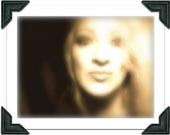
*
*
*
*
*
*
*
When a German medical student and soldier named
Jürgen
Wittenstein introduced two young men in the fall
of 1940,
he had no way of knowing his friends would make
history and
forever be remembered as heroes.
By the summer of 1942, Hans Scholl and Alexander
Schmorell
were at the center of a close-knit group of
friends who
shared the same ideals and interests in medicine,
music,
art, theology and philosophy. They soon
recognized their
shared disgust for Adolf Hitler, the Third Reich
and the
Gestapo. Hans and Alex were soon joined by
Christoph Probst
(a level-headed, married soldier and father of
three who
was loved by everyone who knew him) and Willi
Graf (another
medical student and a devout Catholic who never
joined the
Hitler Youth and refused to acknowledge those who
did). And
there was Sophie, Hans Scholl's younger sister
who joined
Hans and his friends at the University to study
biology and
philosophy. These friends, sometimes joined by
popular
philosophy professor Kurt Huber, Jürgen
Wittenstein and
others, formed the heart of The White Rose.
Hans and Alex acted alone at first, writing and
duplicating
an editorial leaflet with the heading: "Leaflets
of The
White Rose". The piece was scathing in its
criticism of
every-day Germans who sat back and did nothing to
combat
the Third Reich. The leaflet went on to suggest
"passive
resistance" as the best way to silently encourage
the down-
fall of the "government". Three more leaflets
quickly
appeared, all with the same heading: "Leaflets of
The White
Rose". Each of these documents was more
hard-hitting than
the last, while more and more friends of Hans and
Alex began
to contribute. Two final leaflets appeared, one
in January
1943 and the last around February 18th. These
were headed
"Leaflets of the Resistance".
The members of The White Rose worked day and
night, cranking
a hand-operated duplicating machine thousands of
times to
create the leaflets which were each stuffed into
envelopes,
stamped and mailed from various major cities in
Southern
Germany. Recipients were chosen from telephone
directories
and were generally scholars, medics and
pub-owners (which
seemed to puzzle the Gestapo -- but who better to
spread the
word or post a leaflet!). While Hans and Alex
alone drafted
the first four leaflets, they counted on
Christoph Probst to
comment and criticize. Jürgen edited the third
and fourth
leaflets and traveled to Berlin with the
dangerous
documents. Willi contributed to the fifth leaflet
and did a
generous amount of leg- work, getting supplies
and trying to
recruit support outside of Munich. Sophie worked
hard at
getting stamps and paper (one couldn't buy too
many stamps
at one place without arousing suspicion) and also
managed
the group's funds. Kurt Huber contributed to the
fifth
leaflet and solely drafted the sixth (and final)
leaflet,
while Hans was apprehended with a rough-draft of
a seventh
leaflet written by Christoph Probst. All members
traveled
throughout Southern Germany (and beyond) to mail
stacks of
leaflets from undetectable locations. Hundreds of
leaflets
were also left at the University of Munich,
carefully hand-
delivered in the middle of the night.
On three nights in February 1943 -- the 3rd, 8th
and 15th --
Hans, Alex and Willi conducted the most dangerous
of all the
White Rose activities. The three men used tar and
paint to
write slogans on the sides of houses on
Ludwigstrasse, a
main thoroughfare in Munich near the University.
They wrote
"Down With Hitler", "Hitler Mass Murderer",
"freedom", and
drew crossed-out swastikas... this while
policemen and other
officials patroled the streets of Munich. It was,
by far,
the most public, blatant and dangerous of their
activities.
It isn't certain why Hans and Sophie Scholl
brought a suit-
case full of leaflets to the University during
the day on
Thursday, February 18, 1943. Upon reaching the
University,
they passed Willi Graf and friend, Traute
Lafrenz, who were
leaving.
They made plans to meet later in the evening,
never mention-
ing the leaflets in the case. Together, Hans and
Sophie
entered the deserted atrium which, in minutes,
would be
flooded with students exiting lectures and
classes. They
worked quickly, dropping stacks of Kurt Huber's
leaflets
throughout the corridors. With time running out,
the brother
and sister hurried outside to safety. Then they
noticed
there were still leaflets left in the suitcase.
Deciding it
would be silly not to leave the few extra
documents, they
returned to the atrium, climbed a grand marble
staircase to
the upper level of the hall and Sophie flung the
last of
the leaflets high into the air.
Sophie herself explained it this way: "It was
either high
spirits or stupidity that made me throw 80 to 100
leaflets
from the third floor of the university into the
inner court-
yard." The dozens of pieces of paper glided
freely, landing
in a shower at the feet of students who suddenly
poured out
of lecture halls into the atrium. And standing
somewhere in
the crowd was Jakob Schmidt, University handyman
and Nazi
party member, who saw Hans and Sophie with the
leaflets.
The police were called, the doors were locked,
and Hans and
Sophie apprehended and taken into Gestapo
custody. By some
accounts, Hans and Sophie had plenty of time and
could
easily have escaped before the Gestapo arrived.
Jakob
Schmidt became a momentary Nazi hero and was
cheered at
rallies after the capture of White Rose members.
Today, there are many memorials of the White Rose
throughout
Munich and their story is known to every German.
The White
Rose may have been silenced too early but their
words echo
on...
"Freedom!"
The White Rose







No comments:
Post a Comment